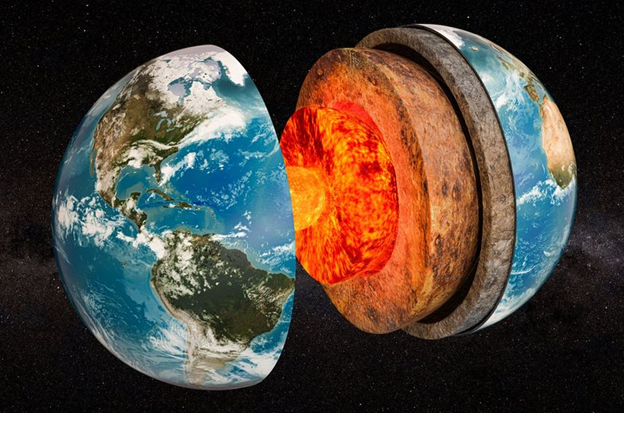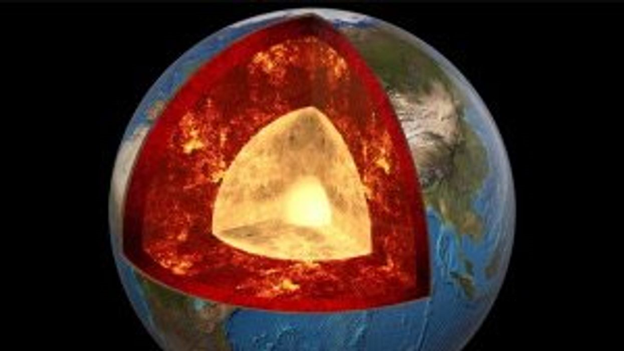Hi readers!
Do you know that there is :
A gigantic ocean under the earth’s outer layer?
a new continent is found after it is missing for 375 years?
a “Mountains” taller than Everest discovered on ‘ancient structure’ around Earth’s core?
discovery of a “ never seen before ecosystem thriving beneath the pacific ocean? and
that the moon is slowly drifting away from Earth.
So, the more the Tsunami of technology is advancing, amazing scientific discoveries are made and being reported which are mostly beyond our comprehension.
According to Marcel Proust: a French novelist, critic, and author of the historic novel À la recherche du temps perdu (remembrance of things past) which was published in seven volumes between 1913 and 1927,
“Discovery Consists not in seeking new lands but seeing with new eyes”.
I would rather say that“ it is not only seeing with new eyes but grasping the new idea with open minds”
because according to Albert Einstein
“The mind that opens to a new idea never returns to its original size while George Eliot is of the opinion that, “it is narrow mind which cannot look at a subject from various points of view hence, to many people, everything is theoretically impossible until it is done.
Dear readers!
The reason for mentioning these quotes is to prepare your mind to absorb new discoveries so that you would not say “it is not possible.”
So, let’s first talk about the first discovery:
a “gigantic ocean under the earth’s outer layer” and the discovery of a “never seen before ecosystem”.
Scientists previously discovered that the water is stored inside a mantle rock in a sponge-like state, which isn’t a liquid, solid or a gas, but instead a fourth state: a semi-liquid or crystalline state of water that forms at the interface with hydrophilic surfaces. (Water absorbs infrared energy freely from the environment; it uses that energy to convert bulk water into liquid crystalline water: fourth phase water which we also call “exclusion zone” or “EZ” water because it profoundly excludes solutes).
The scientific paper titled “Dehydration melting at the top of the lower mantle” was published in 2014 which formed the basis of this discovery (details can be seen at the following link)
https://www-udc.ig.utexas.edu/external/becker/preprints/sjbld14.pdf

There’s three times as much water below the surface than in the oceans (Curtsey iStock: an online royalty free, international micro stock photography provider based in Calgary, Alberta, Canada).
The ringwoodite (the bright orange red material seen inside a bowl like structure in the image above: is a sponge like material which soak up water. The crystal structure of ringwoodite is a high-pressure phase of Magnesium ortho-silicate (Mg₂SiO₄ (Mg₂SiO₄) formed at high temperatures and pressures between 525 and 660 km depth of the Earth’s mantle. It may also contain iron and hydrogen.
Ringwoodite is polymorphous in nature with the olivine phase or white olivine: a magnesium-rich end member of the solution series). White olivine is isomorphous with the iron-rich end-member fayalite) that allows it to attract hydrogen and trap water .
According to the geophysicist (Steve Jacobsen) present at the time of discovery, “this mineral can contain a lot of water under conditions of the deep mantle,” .
He further that
“we are finally seeing evidence for a whole-Earth water cycle, which may help explain the vast amount of liquid water on the surface of our habitable planet. Scientists have been looking for this missing deep water for decades.”
The discovery was made after studying earthquakes when it is observed that seismometers were picking up shockwaves under the surface of the earth which means water was being held in the rock known as ringwoodite. If the rock contained just 1 per cent water, it would mean that there is three times more water under the surface of the Earth than there is in the oceans on the surface.
It’s not the only the discovery of an ocean beneath the earth but a discovery of an entirely “never seen before ecosystem” thriving beneath the pacific ocean’s floor which could significantly expand our understanding of marine life. Researcher have found this when turning over volcanic crust with the aid of an underwater robot which indicated in even in the era of tsunami of technology, nature still has many more secrets to unearth.
And now let’s talk about another (second) discovery:
The “Mountains taller than Everest discovered on “ancient structure” around Earth’s core.
Details can be found at the link below
https://www.geologyin.com/2023/09/mountains-taller-than-everest.html

A new study made as described below has discovered that,
an ancient ocean floor structure could be wrapped around the planet’s core which could be taller that Mount Everest in some areas.
According to a study, first published in April 2023, A high-resolution mapping of the core has uncovered things that scientists previously didn’t know.
The discovery found that a thin but dense layer sits at around 2,900 kilometers below the surface at the Core’s Mantle (a layer of silicate rock between the crust and the outer core) Boundary where rocks meet the molten outer core of the planet.
Geologist from the University of Alabama says that our studies on
“Seismic investigations, provided the highest resolution imaging of the interior structure of our planet earth, which indicated that this structure is vastly more complicated than we thought previously and provides important connections between shallow and deep Earth structure and the overall processes driving our planet.”
The team of researcher from University of Alabama conducted the research from 15 different stations in Antarctica by using seismic waves created by Earthquakes to create a map of what the inside of the planet looks like and identified the unexpected energy within seconds of the boundary, reflected wave from the seismic data. The findings show that although the layer is very thin it does spread for many, many kilometers and has been called the ultra-low velocity zone (ULVZs) due to its strong wave speed reductions.
Due to the properties of the ULVZs. the experts believe that the layer could vary dramatically in height.
The Geophysicist from Arizona State University further added, that “the material’s thickness varies from a few kilometers to [tens] of kilometers which suggests that we are seeing mountains on the core, in some places up to five times taller than Mt. Everest.”
These underground mountains could play a significant role in how heat escapes from the Earth’s core and power magnetic fields and volcanic eruptions. The team’s studies suggest that the layer could encase all of the cores, but further research will have to be carried out to determine if that is the case.
And now the third discovery about that is about the moon slowly drifting away from the earth.
Pl see details at
https://www.livemint.com/news/world/why-is-moon-slowly-drifting-away-from-earth-11677335970765.html
On 25 Feb 2023,
NASA scientists have revealed via Livemint that the Moon is slowly drifting away from the Earth at the rate of 3.8 cm per year. The phenomenon didn’t used to occur earlier and is possibly the result of Milankovitch cycles.
In this rear discovery, scientists have found that the Moon is slowly drifting away from the Earth. The Moon is the only natural satellite revolving around the Earth. Earlier, it was assumed that the Moon used to remain at a constant distance from Earth because of gravitational pull, but the new discovery has raised several questions about the Moon.
According to NASA, the Moon is slowly drifting away from Earth by 3.8 cm per year as has been reported by a website based in UK.
In the distant past, the Moon used to be a major part of measuring time and as a calendar by ancient human civilizations. However, the latest discovery has brought a lot of questions about past findings and discovery, reported indy100 website (famous for reporting new discoveries: some of which are also being reported in this blog.
If the Moon continued to drift away from Earth at the same rate, then it would have possibly collided with Earth around 1.5 billion years ago? which never happened in the past.
The new discovery of increasing distance between the Moon and Earth could have been interesting, but at same time (as per believe of Professor Joshua Davies at the Université du Québec Montréal, who is à research associate there, Margriet Lantink from the University of Wisconsin-Madison and their colleagues from Utrecht University and the University of Geneva), it is proving a “poor guide for the past”.
Experts believe that “Milankovitch cycles” could be the reason behind the drifting of the Moon away from Earth. (Please read my blog about Milankovitch cycles at Climate is changing alarmingly? OMG, but how it is changing? – AM AgriCon Pakistan and my vlog at https://www.youtube.com/watch?v=BK9S8etqd1Q ).
These cycles describe the tiny diversion in the shape of the Earth’s orbit, its axis, and its impact on the amount of sunlight received on Earth.
The amount of sunlight received on the Earth affect its climate and is an indicator of the periods of wet and dry weather.
Milankovitch cycles can lead to a complete reversal of weather in a region. They were the reason behind the period of greening in the Sahara desert. They are also the major force that impact the size of lakes on Earth.
These cycles and their frequencies also determine the distance between the Moon and the Earth.
According to scientists, the Moon was 60,000 km closer to Earth around 2.46 billion years ago, compared to its present distance. This means that the moon is really drifting away from the earth and consequently, the blue planet (earth is called the “Blue Planet because over 71 percent of it is covered with water hence, from outer space it appears blue which is why Earth is called the ‘Blue Planet”) used to receive 17 hours of sunlight per day.
Dear reader! did you noticed?
Things don’t turn up in this world until somebody turns them up because
“No man ever made a great discovery without the exercise of the imagination”.
To me the greatest discovery is “the invention of agriculture” which made human’s survival, from the time of Adam and Eve and will remain so till the end of times.
Idea taken from Norman Borlaug Nobel lecture, December 1970.
See you next wee, take care, Bye





